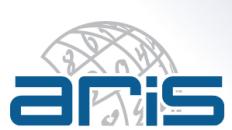PROGRAMME: Archaeological research (2022−2027)
Principal Investigator at ZRC SAZU
-
Original Title
Arheološke raziskave (2022−2027)
Project Team
Maja Andrič, PhD, Nina Caf, PhD, Lucija Grahek, PhD, Jana Horvat, PhD, Maja Jevnikar, Tamara Korošec, Lucija Lavrenčič, Zvezdana Modrijan, PhD, Primož Pavlin, PhD, Tilen Podobnik, Anja Ragolič, PhD, Brina Škvor Jernejčič, PhD, Benjamin Štular, PhD, Snežana Tecco Hvala, PhD, Tjaša Tolar, PhD, Borut Toškan, PhD, Edisa Lozić, PhD, Elena Leghissa, PhD, Matija Turk, PhD, Bine Kramberger, PhD-
ARIS Project ID
P6-0064
-
Duration
1 January 2022–31 December 2027 -
Link to SICRIS
19004 -
Programme Leader
-
Financial Source
Slovenian Research and Inovation Agency

The programme is focused on fundamental research to acquire new knowledge about the development of man and society in the earliest periods. It is multi-layered and encompasses a wide range of activities, from the implementation and testing of new research methods and the construction of databases and documentation systems to acquiring new insights into settlement structures, trade, social processes, and the way of life of people who lived in the south-eastern Alps from prehistory to the Middle Ages.
In the Palaeolithic & Mesolithic, the dynamics of the process of microlithisation, the development of microlithic tool types and mobility are studied. We look at the chronology, settlement dynamics, and life in all their aspects in the Neolithic. The interdisciplinary manner of the research providea a more comprehensive picture of the settlement, life, and burial in the wider area of central Slovenia in the Bronze Age. We are interested in communication flows and the processes of centralisation, disintegration, and reintegration in the Iron Age. Romanisation is studied through questions of military presence, immigration, the new organisation of space, changes in the settlement picture, the role of autochthonous people, and chronology. Settlement development is discussed with the help of town, small settlement, and countryside studies. Everyday provincial life, as is derived from the texts of selected antique sources, is also studied. The crisis of the Roman Empire is dealt with. The change in the settlement pattern at the transition to the Late Roman period is studied. The study of the development of early Christianity continues and the transition from the Late Antiquity to the Early Middle Ages is studied. The development of Early Medieval settlement is researched with extensive data gathering.
Archaeological analyses are upgraded with those from natural science and comprehensively interpreted with digital tools. New research approaches are developed with interdisciplinary research on material culture. Within natural science studies, man’s influence, climate fluctuations, and other environmental processes in vegetation is studied. Knowledge about trade, social circumstances, and the origin and spread of cultural plants, as well as data about the environment, are upgraded with archaeobotanical research. We are interested in diet, the diversity of animal husbandry policies, communication, and migration. Classical research approaches are upgraded with contemporary statistical and biochemical tools.
The Centre of Epigraphy, the only such institution in Slovenia, functions at the Institute of Archaeology. Nationally significant comparative collections for archaeobotany and archaeozoology are supplemented and, simultaneously, the equally important Arkas, Zbiva & Libera databases are upgraded and updated.
We publish the central Slovenian archaeological journal Arheološki vestnik and the monographic series Opera Instituti Archaeologici Sloveniae and E-Monographiae Instituti Archaeologici Sloveniae.